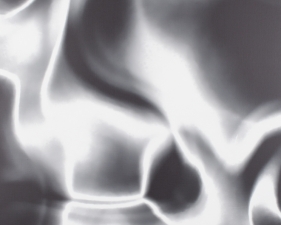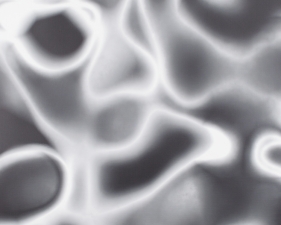DATA MINING – in the Project Space
The Benrubi Gallery is pleased to announce two new exhibitions, which will be running concurrently, Jeffrey Milstein's NY LA and Eric Cahan's Data Mining.
In the main gallery, Milstein, long known for his images of planes in flight photographed from directly below, reverses the perspective in the current images, offering views of New York and Los Angeles taken from an altitude of 1,000 - 2,000 feet. The distance is far enough that the geometry of the urban streetscape, invisible from the ground, emerges into surprising, often elegant patterns, as in the Masonic-inspired layout of the Park La Brea housing development in Los Angeles, yet close enough that the scenes retain a human feeling, whether it's the claustrophobia of tiny rectangular houses squeezed next to each other in virtually treeless grids. The images suggest that however chaotic or inscrutable modern life might appear, it is tied to age-old patterns that guide in ways we don't immediately perceive, but which nevertheless guide us through our daily routines.
In the project space, Eric Cahan's Data Mining takes its name from marketing research techniques that measure web users' browsing patterns when they view fine art content online. A museum-goer spends an average of thirty seconds in front of an individual work of art, whereas a browser on Instagram or Pinterest spends only eight. Images flow past the eye one after another, throwing into question long-held assumptions about the totemic nature of a work of art. Cahan mirrors this blurring process in his photographs, transforming solarized image of water through a combination of techniques both digital and traditional. The resulting images, luminescent yet opaque, are as seductive as carnival mirrors, yet ultimately reflect only the viewer's gaze. Though representational, there silver swirls and bursts of color and shadow are so abstracted that they challenge our notion of what a photograph actually communicates: a view of an object removed in time and space, or nothing but the viewer's assumptions about the image itself.
Jeffrey Milstein's photographs have been exhibited and collected throughout the United States and Europe, including the Ulrich Museum of Art (2008), the Smithsonian National Air and Space Museum (2012). Noted British photographer and critic, Martin Parr included his photographs in his curated show New Typologies. He has been published in numerous newspapers, magazines, and other periodicals, including New York Times, LA Times, Harper's, GQ, Esquire, Fortune, Time, the Los Angeles Times, the San Francisco Chronicle, and Wired. His work can be seen at LACMA in Los Angeles, CA, the Smithsonian Museum in Washington, DC, George Eastman House in Rochester, NY and the Akron Art Museum in Akron, OH.
Eric Cahan was born and raised in Manhattan. He studied at The University of Southern California and New York University, where he graduated from The Tisch School of the Arts' Film Program. He currently resides in Brooklyn, NY. His work has been exhibited in numerous group exhibitions throughout New York and is in major collections including Art in Embassies and BNY Mellon.
Gallery Summer Hours: Mon – Thurs 10am – 6pm, Friday 10 – 5:30pm
For press inquiries please contact Lou Peralta: lou@benrubigallery.com
For other inquiries please contact Benrubi Gallery: info@benrubigallery.com
Influenced by both the Impressionists’ depiction of natural light and its ever-changing qualities, as well as Color Theory, Cahan creates his minimalist yet vibrant images by holding colored resin filters in front of the camera. “A lot of people ask me if this is all done in Photoshop,” Cahan has said. “In fact, I will only tone photos to match the paper type and, in some cases, add a bit of color curves.”
Cahan made most of the work for his recent project, Sky Series, during his extensive travels. Each photograph and sculpture is titled with the time and location of its conception. In this way, Cahan catalogues his visual journal and his viewers see in his work his unique interpretation of a specific time and place. His polyester resin sculptures, made from the same surface material as surfboards and sailboards, can be considered three-dimensional interpretations of his photographs. Similarly meant to capture and manipulate light, they conjure the sensation of looking into the sky or the ocean. “My mission is to capture light,” Cahan has said. “Light is the true subject of this series: its constant mystery, the way it shifts and colors everything around it in nature.”









